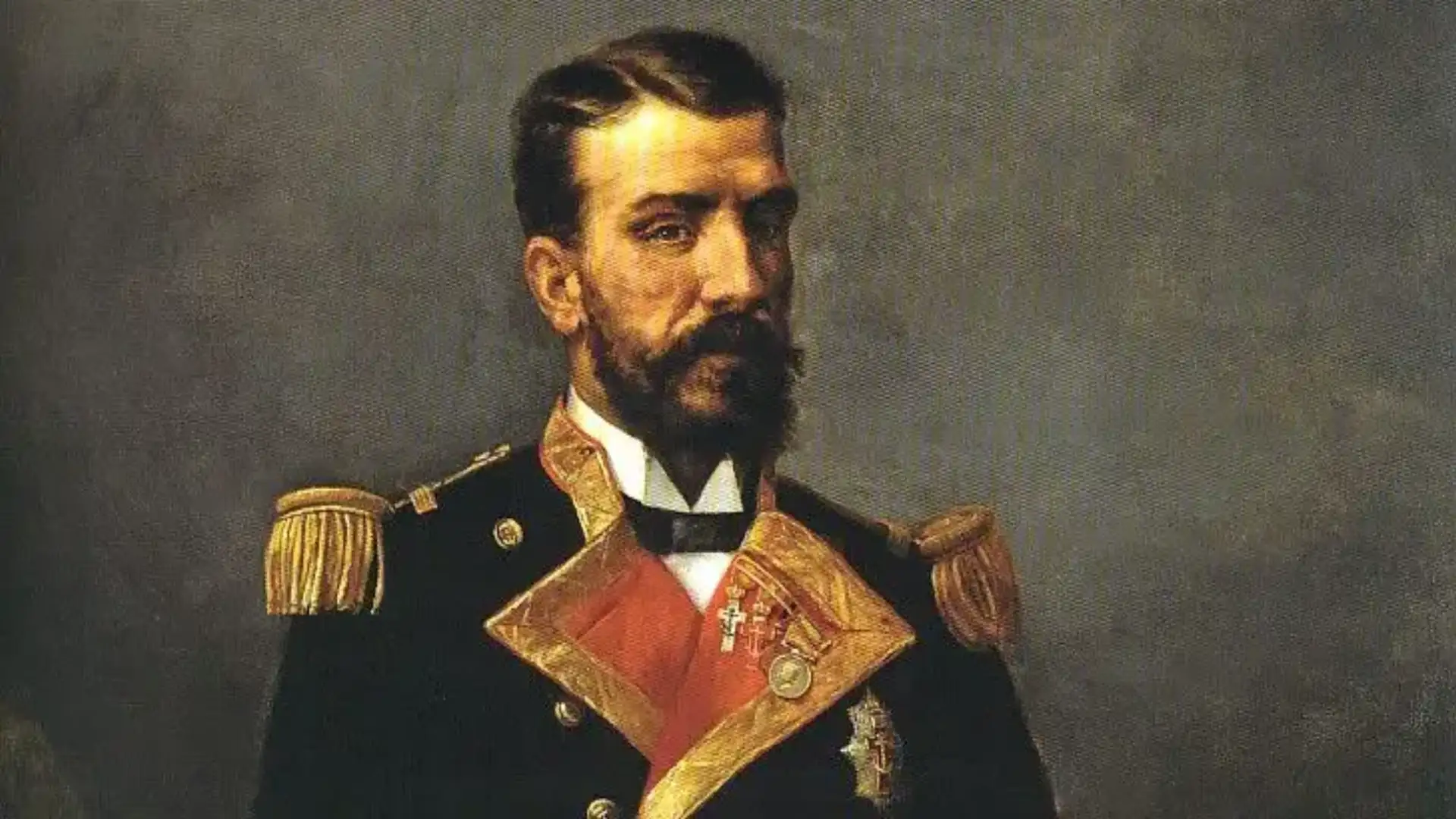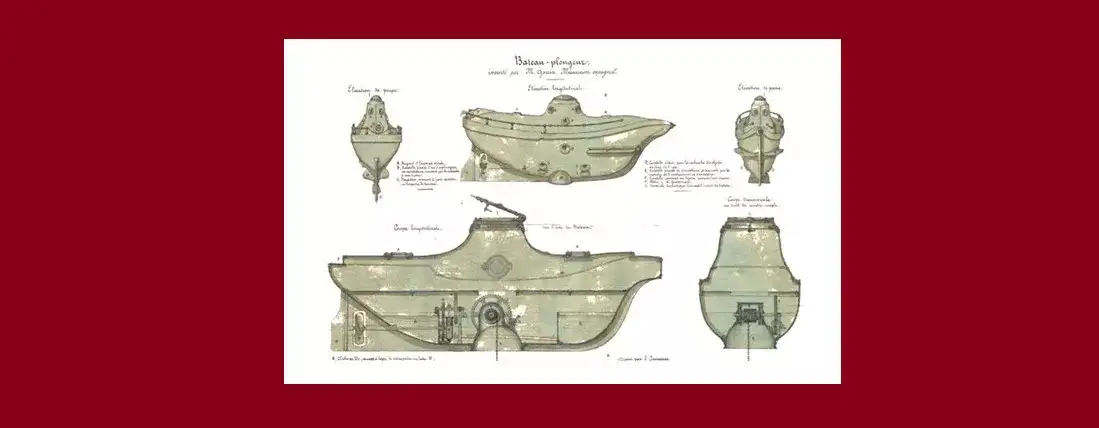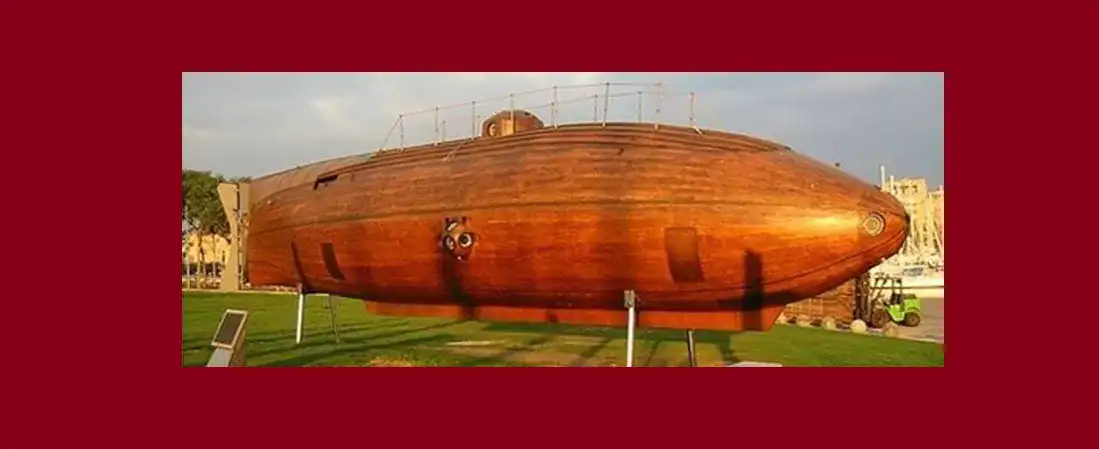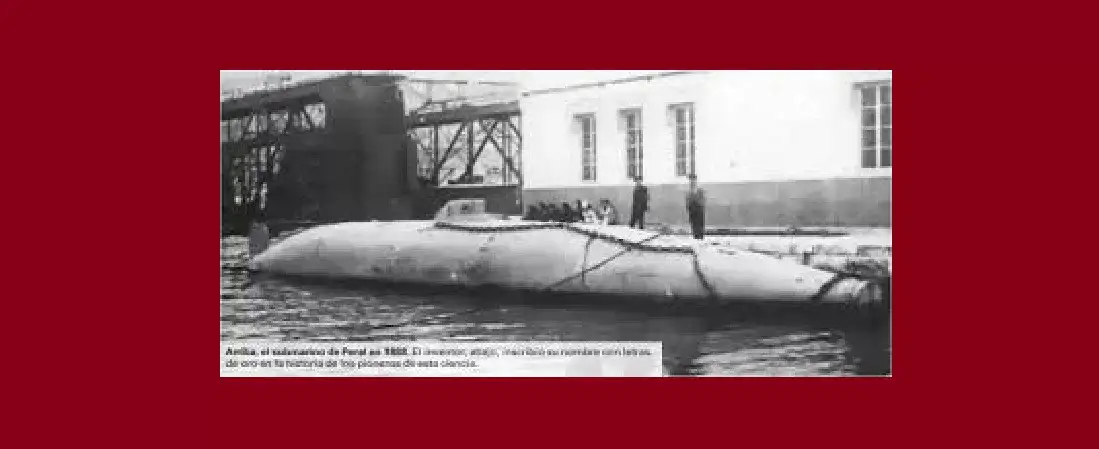
Cosme García, Monturiol, Peral and Sanjurjo the precursors of underwater navigation
Cosme García, Monturiol, Peral and Sanjurjo the precursors of underwater navigation

The plans of the submarine that designed the riojano Cosme García and tested successfully in 1860.
COSME GARCIA
He was born on September 27, 1818. He conceived the first idea of a submersible ship when travelling to Barcelona for the purpose of showing the management and conservation of his mail machine. The press in those days echoed Bauer's latest experiments in Russia, as well as the projects and tests of diving bells. The Riojan inventor was raised in the most rational way possible: to first build a small prototype that would serve as a bank of tests and experiences, from which the teachings will come out for the true attempt. To realize its prototype, Cosme García went to the company Maquinista Terre y Marítima de Barcelona, founded recently, and one of the pioneers of the metal constructions in Spain. What is surprising is that the inventor decided on an iron helmet, when there were still many who doubted that ships could be made with such material as they were hesitated to float. Districked by not finding the slightest official support, he slapped it. He died in 1874.

Submarines "Ictino I e II" (Enginyeria Reventós, S.L.)
NARCIS MONTURIOL
Natural of Figueres (1819), from a very young age he was attracted to the idea of creating a new ship that could imitate the fish to free divers from hard work to extract coral from the seabed. In 1858, after several years of study, he announced his project through the publication of a scientific memory that he titled THE ICTINEO or BARCO PEZ. With the help of many friends he was put in a keel in Barcelona and launched on June 28, 1859. In September of the same year he remained submerged 2 hours and 20 minutes. Making more than 50 dives in Barcelona waters and four in Alicante from its launch until 1862.
The tests carried out in Alicante on May 7, 1861 were a success, and witnessed by the ministers of Marina and Fomento. In 1862 he published a memory entitled "A PROPOSIT OF THE CONSTRUCTION OF A GUERRA ICTINEO." The official command of the Navy did not arrive (never arrived) and due to the lack of money to follow the project, it created the society THE SUBMARINE NAVIGATION associated with the same, the money flowed and on October 2, 1864 the ICTINEO II was launched into the water. On October 22, 1867, he made his first steam exit but the discouragement and indifference of the people forced him to suspend the work, culminating in the bankruptcy of the company and the embargo of the ICTINEO that malsold it as scrap.
He made dives up to 8 hours
It went down to 18 meters (in 31 minutes)
In the tests it reached the depth of 30 meters
In the summer of 1885, he was sick and bitter and moved to the house which, in Sant Martí de Provencals, near Barcelona, was owned by his son-in-law, engineer José Pascual Deop; and in it he died on 6 September of the same year. His remains have been resting since 1972, in his hometown of Figueres.

Isaac Peral, a betrayed hero
ISAAC PERAL
His studies of underwater navigation led him to present the project of construction of a submarine torpedo ship to the Minister of Marina, Admiral Manuel de la Pezuela and Lobo, on 9 September 1885, coinciding with the conflict of the Carolinas. The project was welcomed with interest and previous experiences were funded from public funds. Despite the difficulties of sabotage during these trials, on 20 April 1887 Queen Mary Cristina signed the Decree approving the construction of "a ship for submarin navigationa. "Thus, on October 7, 1887, the order for the construction of the submarine was given in the Arsenal de la Carraca (Cadiz), and the collection of materials began. The project is undergoing some changes. The torpedoes to be purchased, manufactured by Whitehead (Italy), are replaced by the German Schwartzcopf. However, the keel is put on 1 January 1888 and the launch is made on 8 September of the same year. Several tests are carried out in the following months.
On 17 January 1890, all the tests had been successfully completed until point 5, although the Marina authorities were not fully satisfied. A Technical Evaluation Board is set up by March 13 to provide a more complete test protocol. One of the tests consisted of a simulation of attack on the cruise Cristóbal Colón, of 1,150 tons that was carried out on June 7, 1890. During one of the dives there is a breakdown in one of the valves and the submarine begins to flood. When it emerges, it is found that the valve has been sabotaged by one of the crew members, repairs and continues the test (carrying on board the saboteur, already discovered). The optical turret of the submarine was seen less than 1,000 m away by the cruise, the maneuver being failed. This fact raised Isaac Peral's protests by considering that, the 200 guests on board the cruise were warned of the action they were going to witness, nullifying the surprise effect that would exist in a real combat situation. However, the press held the event, praising Peral and his invention.
The final report of the Technical Board highlighted these facts and certain constructive failures of the ship, preventing Peral from refuting or repairing these deficiencies, excusing the lack of technical knowledge of the ship by not possessing the title of Naval Engineer. On October 10, 1890, a Royal Order was published that reflected the conclusions of the Technical Board, but also opened the doors to the construction of a new submarine under the direction of Peral but with the intervention of other departments and authorities. Peral informed the minister of the construction plans of the new ship, a submarine of 120 tons and 30 m in length, whose construction should be led by Peral himself having under his responsibility the selection of human equipment and shipyards where it would be built. The negative response came on October 31, ordering Peral to deliver the submarine to the Arsenal de la Carraca. By 11 November 1890, the Decree ending the underwater navigation projects was promulgated. The hull of the Peral remained in the Arsenal de la Carraca, empty of devices, until 1914, which, at the initiative of Commander Mateo García de los Reyes, Chief of the Undersea Weapon, is transferred to the Cartagena Submarines Base. In 1965, Cartagena City Council called for the submarine to be exposed to all the carthageneros and people visiting the city.

Antonio Sanjurjo built an underwater ship in 1898 to defend Vigo from a hypothetical United States attack
SANJURJO BADIA
Born in Sada in 1837. His father had a workshop, as well as a watch shop, in the town of Coruñesa where he started working with a very young age and in which he installed a foundry years later. He migrates to Cuba in 1854 where with an Andalusian partner he rides a copper caldería workshop. Sanjurjo however wants to return to Spain, and six years later he sells to his partner his participation and crosses the Atlantic reaching a bustling and very indissimilar Vigo, which captivates him already by fixing his residence in the olive city, where he acquires the old workshops of "Ortega and Baamonde" (La Fundidora) to which he changes the name, so it would be his company and that of his descendants: La Industriosa. The industry was located on the current García Barbon street, very close to the gift would be installed the Factory of Beer la Barxa and the Artistic. Among his works is the creation and construction of his particular submarine, currently exhibited in the Museum of the Sea of Vigo, which had a pool with transparent walls, to be able to observe the marine fauna and flora.
His genius and originality was awarded by Alfonso XII, who granted him the Great Cross of Charles III. His great friendship with the great Julio Verne who approached Vigo on several occasions to keep meetings or just days of leisure with him is known. It is obvious that this great Galician influenced the French writer in his concepts of the underwater navigation of the future and even Verne cited Vigo in one of his works, in which he referred to the Battle of Rande. His "Saint Michelle" yachts were repaired in his workshops and Vigo boats.
Manuel Pedro Seoane Cordal
Digital Nautical Editor
© 2024 Nautica Digital Europe - www.nauticadigital.eu











